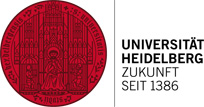Additional ERC Grants for Heidelberg
Heidelberg University has once again received highly endowed funding from the European Research Council (ERC): The interdisciplinary research project of historian Prof. Dr Stefanie Gänger exploring the history of fever is supported by an ERC Consolidator Grant with funding of around 1.7 million euros. In addition, five further ERC Starting Grants have been allocated to Ruperto Carola in the latest approval round: They go to Junior Professor Dr Daniela Duarte Campos, Prof. Dr Kerstin Göpfrich and Dr Stefan Pfeffer, all scientists at the Center for Molecular Biology of Heidelberg University (ZMBH), to Dr Victoria Ingham from the Medical Faculty Heidelberg, who does malaria research with her research group at the Heidelberg University Hospital, and to a research project led by Dr Kathryn Kreckel, based at the Centre for Astronomy of Heidelberg University. The ERC is making a total of approx. 7.5 million euros available for the research projects – 1.5 million euros for each ERC Starting Grant.
With the ERC Consolidator Grant, the European Research Council reaches out to outstanding researchers whose own independent research is in a phase of consolidation. The central criterion for receiving the grant is scholarly excellence. The ERC Starting Grants support outstanding young scientists from all disciplines who have already produced excellent work and wish to conduct pioneering research as project leaders.

Stefanie Gänger
Stefanie Gänger, whose teaching and research is based at Heidelberg University’s Department of History, where she is Professor of Modern History, researches in her ERC-funded project “FEVER – Global Histories of (a) Disease, 1750-1840” the prevalence and experience of fever in the Atlantic World, from the coastal region of southwestern Europe to western Africa and the southern Americas. It also deals with the historic disease concept as well as contemporary explanations and remedies. In doing so, Prof. Gänger pursues a global historical approach to histories of medicine, the body, and disease that move beyond European perspectives, with an emphasis on societal variations in disease concepts, remedies, and the susceptibility to certain ailments. The research project, that was largely developed in the framework of her fellowship at Heidelberg University’s Marsilius Kolleg, engages in an interdisciplinary dialogue with the medical and natural sciences: As Marsilius-Fellow Prof. Gänger explored, in cooperation with parasitologists and biophysicists, “The Phenomenon of Fever”.

Daniela Duarte Campos
Finding a new biotechnological procedure to treat heart failure is the aim of the project “LIGHTHEART – Surgical optogenetic bioprinting of engineered cardiac muscle” led by Daniela Duarte Campos. To achieve this, she will combine bioprinting – new cellular structures are fabricated from body cells and then “printed” – with optogenetics. Using this technology, cellular structures can be assembled with the aid of light. LIGHTHEART is based on the development of an innovative surgical bioprinting tool for fabricating, directly at the heart, muscle tissue engineered from stem cells and assembled under the influence of light. It is intended to supplement traditional transplantation medicine and open new horizons for patients on the waiting list for a heart transplant.
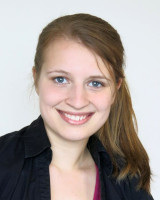
Kerstin Göpfrich
The ERC project “ENSYNC – From engineering to evolution of synthetic cells with RNA origami” led by Kerstin Göpfrich deals with the evolution of artificial cells. The aim of the research project is to create a prototype of a synthetic cell encompassing a fundamental characteristic of life – the ability to evolve. In the context of ENSYNC, Prof. Göpfrich wants to develop a new molecular hardware based on DNA and RNA origami, i.e. the “art of folding” macromolecules in the nano world, which equip synthetic vesicles with cellular functionality. With their ability to evolve, the functionality of the vesicles and their hardware can be constantly improved. Step by step, an artificial model cell will emerge whose building blocks, in future, could take on specific tasks in a diseased organism, the scientist explains.
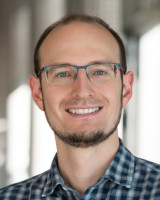
Stefan Pfeffer
The cellular response to stress is at the heart of the ERC project “RiboStress – Stress-induced structural and organizational adaptations of the cellular translation machinery” led by Stefan Pfeffer. It focuses on the cellular processes for synthesising proteins. If they are perturbed under the influence of stress, nascent but also already folded proteins can be destabilised and deprived of their correct function or even aggregate. In his ERC project RiboStress, Dr Pfeffer intends to structurally elucidate how cells react to stress by remodelling the activity, structure and molecular organisation of ribosomes – the cellular machinery of protein synthesis. To do so he uses a cutting-edge approach to high-resolution three-dimensional imaging, termed cryo-electron tomography, which enables visualisation of ribosomes in their native cellular environment at molecular detail.
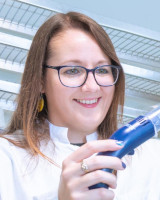
Victoria Ingham
Innovative methods for fighting malaria are the focus of the ERC project “ReMVeC – How has the rapid scale-up of malaria control in Africa impacted vector competence?” led by Victoria Ingham. Malaria is caused by parasites transmitted to humans when bitten by infected mosquitoes. Insecticides and drugs are the main tools used to fight the infectious disease. Mosquitoes and parasites have, however, developed resistances to them and no longer die as a consequence. In the context of the ReMVeC project, the medical entomologist wants to examine how the different resistances impact the development of the malaria parasites in the mosquito, in order to determine how insecticides and medicines could best be used in regions where malaria is endemic. In addition, Dr Ingham intends to use the stress reaction of mosquitoes to develop new strategies to minimise infection.
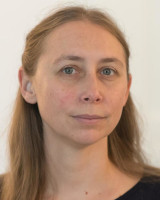
Kathryn Kreckel
In her ERC project “ISM-METALS – Tracking galaxy evolution with precise and accurate metal abundances in the interstellar medium”, Kathryn Kreckel uses heavy elements – referred to as “metals” in astronomy – in the interstellar medium to study fundamental processes of galaxy evolution. The life and death of stars produce metals that enrich the interstellar medium – that is, the gas between the stars within a galaxy – with elements such as carbon, oxygen, nitrogen and sulphur. These, in turn, are important for the next stars to form. With the ISM-METALS project, the astrophysicist wants to achieve high-precision metallicity measurements in areas of star formation in the Milky Way and in more distant galaxies using new optical spectra. This is necessary to improve our understanding of measurements from the James Webb Space Telescope, to learn how metals build up over cosmic time.
